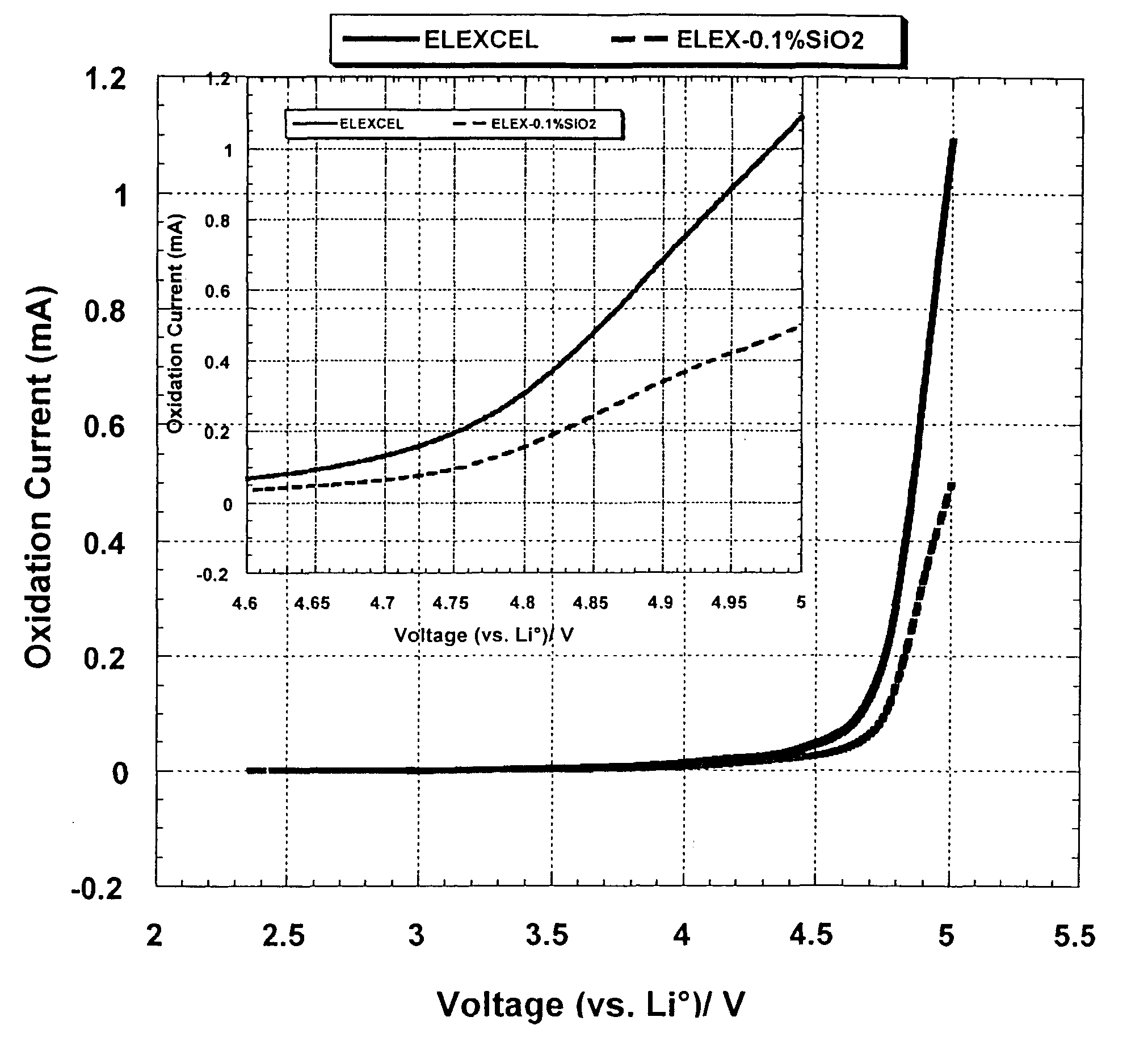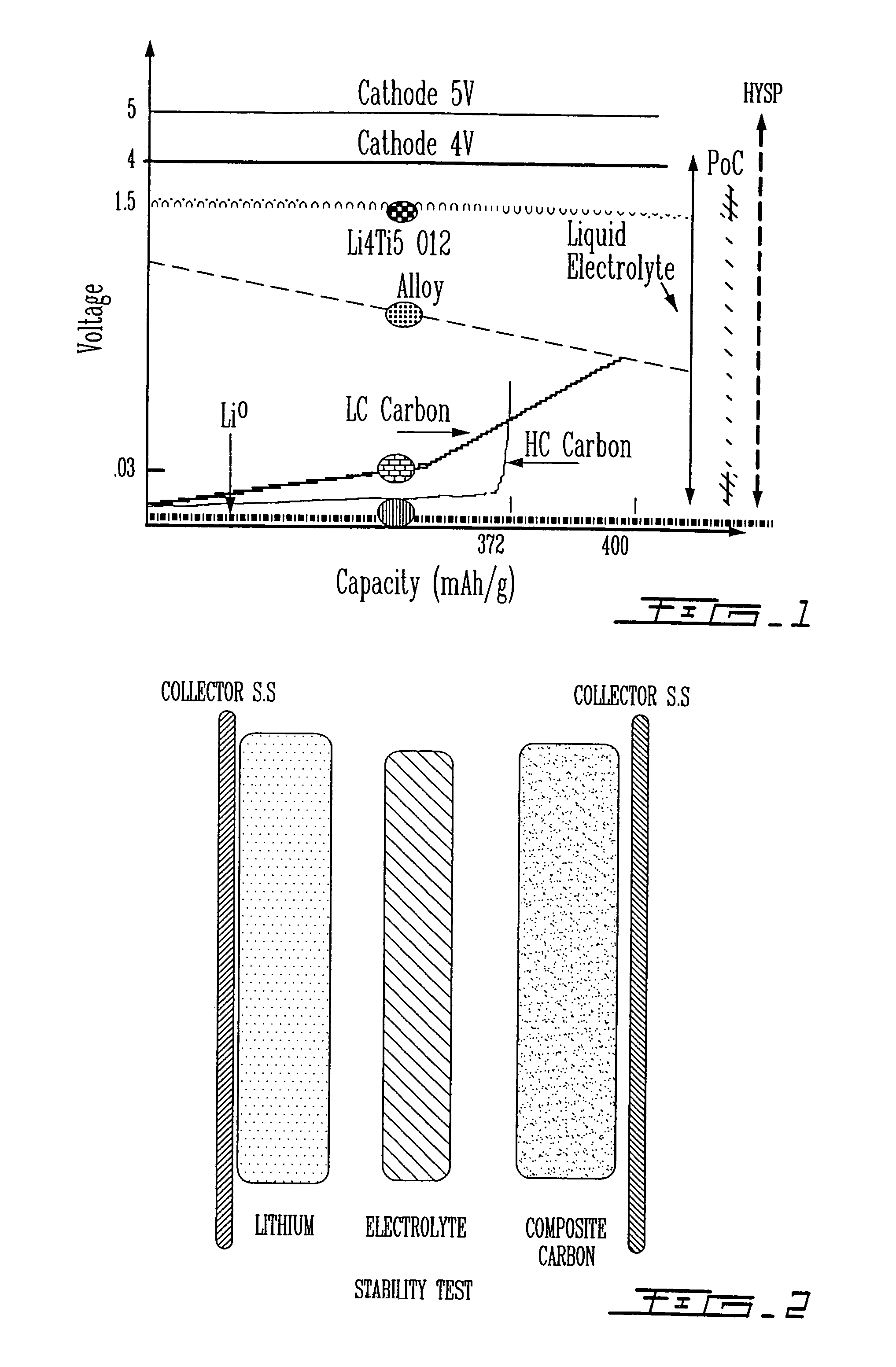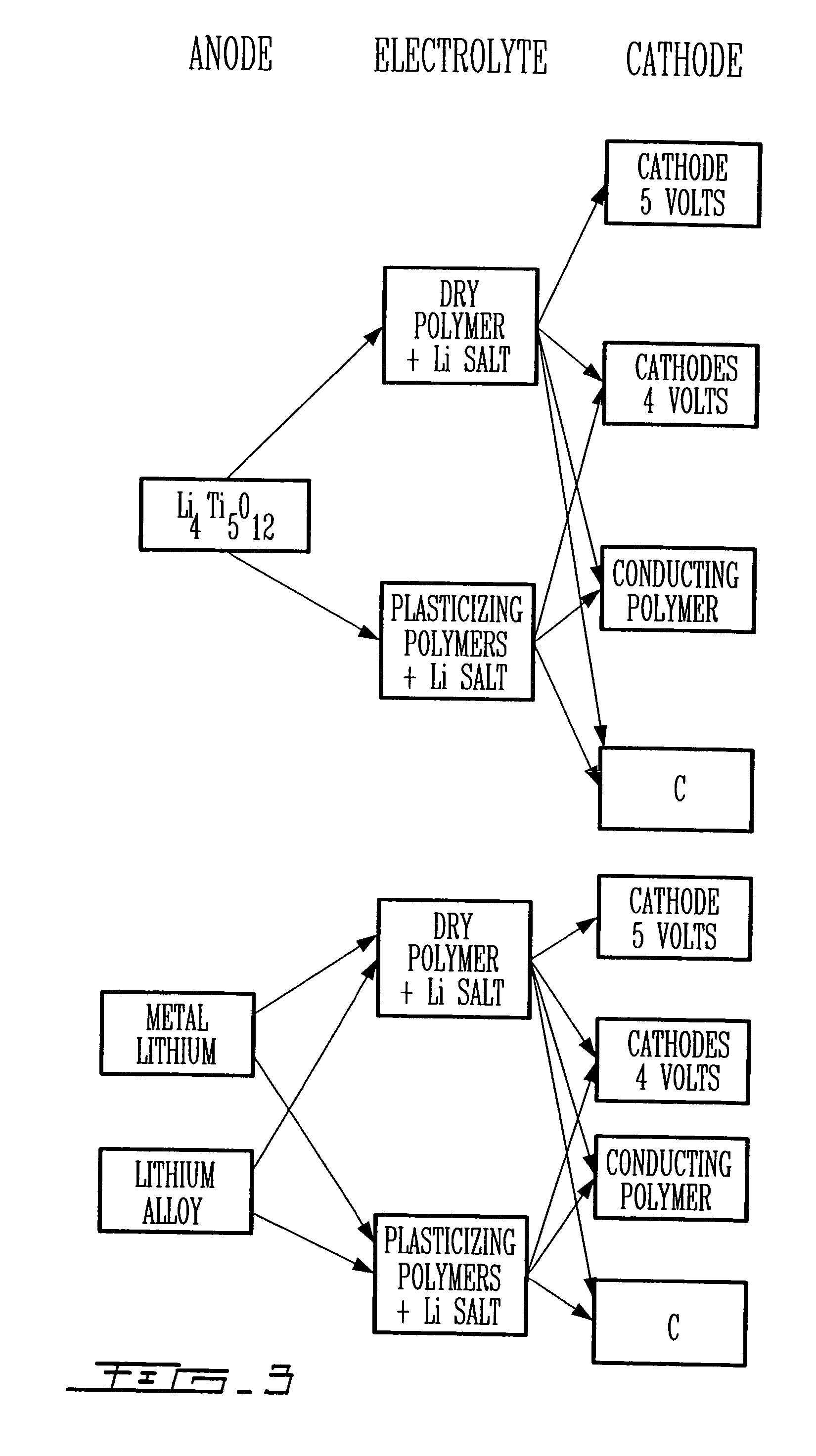Polymer electrolyte with high stability, its use in electrochemical systems
a polyether and electrolyte technology, applied in the field of electrochemical systems with high stability, can solve the problems of unstable polyether type, limited discharge speed 2c, and difficulty in obtaining the same chemistry to large volumes for applications in the field of electrical cars, etc., and achieve the effect of substantial electrochemical stability
- Summary
- Abstract
- Description
- Claims
- Application Information
AI Technical Summary
Benefits of technology
Problems solved by technology
Method used
Image
Examples
example 1
Test of Stability Under Oxidation of the Polymer Gel ELEXCEL MP210-1: Electrolyte and Binder
[0117]80% by weight of the four branched star shaped polymer ELEXCEL MP210-1 is mixed with 20% by weight of a PVDF (KUREHA, Japan, KF 1300) of molecular weight 500,000 g / mole, to provide the polymer matrix.
[0118]Then, 78% by weight of this polymer matrix is mixed with 22% by weight of Shawinigan carbon having a particle size between 100 nm and 250 nm.
[0119]This mixture is dispersed on an aluminum collector, and is thereafter heated during 12 hours under a flow of nitrogen. Then, drying is completed during 2 hours under vacuum. The thus obtained electrode is mounted to face a lithium metal electrode separated by a Celgard (reference 2300) soaked with a EC+DMC-1M LiClO4 electrolyte.
[0120]The electrochemical test that is carried out is a slow cyclovoltammetry (10 mV / h) between 3 and 4.5 volts. In this voltage range of 3 and 5 volts, a stability under oxidation was obtained as compared to a stand...
example 2
Test of Stability Under Oxidation of the Polymer Gel ELEXCEL MP210-1: Electrolyte
[0121]A Shawinigan carbon composite (20 weight percent) is mixed with a binder of the type PVDF (80 weight percent). An electrode is prepared manually. This electrode is used as working electrode. Metallic lithium is used as a counter electrode as well as a reference in the electrochemical cell.
[0122]The polymer electrolyte is prepared by mixing polymer ERM-1 ELEXCEL (4 branches) from DKS lot 8K1201 with 1.5 M LiBF4 in EC / GBL (1:3) from Tomiyama, and addition of a Perkadox 16 thermoinitiator from Akzo Nobel, in the proportions: 0.102 grams of Perkadox-16 (1000 ppm) in 100 grams of the solution ERM1(EC:GBL+LiBF4), knowing that the weight ratio ERM1 / EC:GBL+LiBF4) is (90:10).
[0123]FIG. 4 shows the experimental device used to carry out infrared in-situ polymerization, at a temperature of 80° C. After 1 hour of treatment, the gel is completely formed, and is of transparent color. The three electrodes are con...
example 3
Stability Test Under Oxidation of the Polymer Gel ELEXCEL MP2101 1 / TiO2 (XP-416): Electrolyte
[0124]The same Shawinigan carbon composite as in example 2 is mixed with a binder of the type PVDF. An electrode is manually prepared from this composite. This electrode is used as working electrode in an electrochemical device of the three electrode type. Metallic lithium is used as counter electrode as well as reference. The polymer electrolyte is prepared by mixing polymer ERM-1 ELEXCEL (4 branches) from DKS lot 8K1201 with 1.5 mole of LiBF4 in EC / GBL (1:3) from Tomiyama, and by addition of the Perkadox 16 thermoinitiator from Akzo Nobel in the proportions: 0.101 grams of Perladox 16 (1000 ppm), 100 grams of the ERM1 / EC:GBL+LiBF4) solution, and 0.506 grams of TiO2 nano (XP-416 from Kronos). The weight ratio ERMI / (EC:GBL+LiBF4) is (90:10).
[0125]FIG. 4 shows the experimental device used for infrared in-situ polymerization at a temperature of 80° C. and after 1 hour, the gel is completely fo...
PUM
| Property | Measurement | Unit |
|---|---|---|
| stability voltage | aaaaa | aaaaa |
| stability voltage | aaaaa | aaaaa |
| voltage | aaaaa | aaaaa |
Abstract
Description
Claims
Application Information
 Login to View More
Login to View More - R&D
- Intellectual Property
- Life Sciences
- Materials
- Tech Scout
- Unparalleled Data Quality
- Higher Quality Content
- 60% Fewer Hallucinations
Browse by: Latest US Patents, China's latest patents, Technical Efficacy Thesaurus, Application Domain, Technology Topic, Popular Technical Reports.
© 2025 PatSnap. All rights reserved.Legal|Privacy policy|Modern Slavery Act Transparency Statement|Sitemap|About US| Contact US: help@patsnap.com



